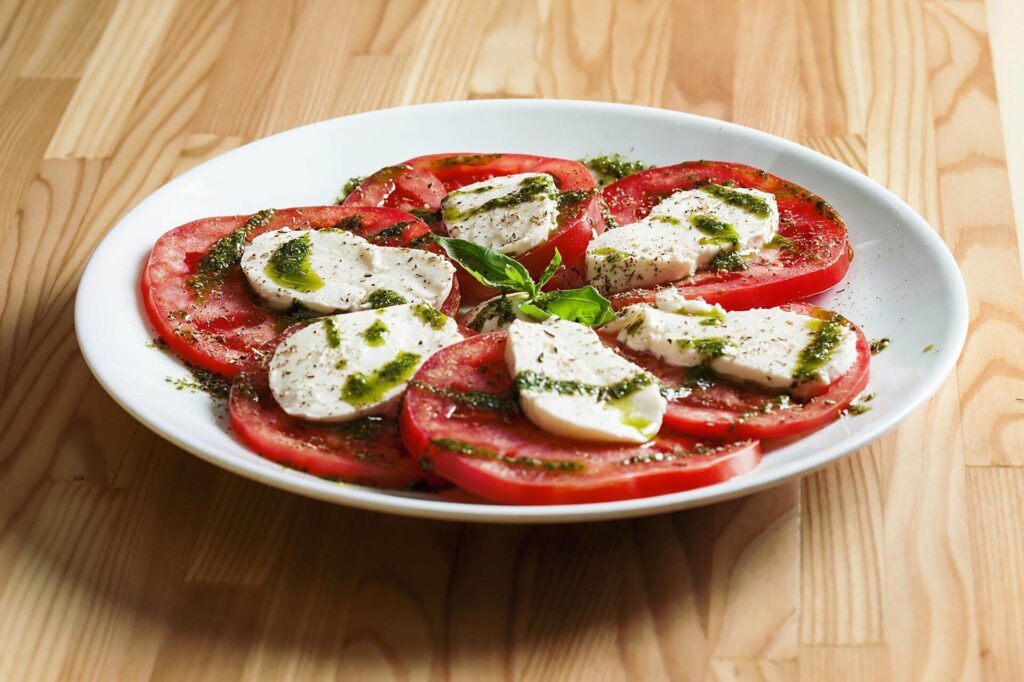For a menopausal woman, keeping fit often becomes complicated. The fault also lies with the metabolism, which tends to slow down as the years go by and lead to weight gain.
So what to do?
The solution is to follow a balanced diet that can give a boost to the metabolism to restart it and give the nutrients needed to get back (or stay) in line.
If you don't know how to do it, you're in the right place: starting from the belief that improvising is never a good idea, we present an example of a "menopause diet" to follow, also providing you with all the information you need to choose the most suitable foods and adapt them to your planner weekly.
Diet in menopause: what to do?
When you enter the phase called menopause, which involves women from the age of 50 onwards, the body begins to undergo changes. This is a hormone-related issue, which can also cause some typical ailments, such as hot flashes or excessive sweating.
Unfortunately, weight also often undergoes changes that you would rather do without! And it is for this reason that following a diet for menopause it can help you feel good and push your metabolism not to stop.
Otherwise what happens? In addition to water retention, the belly can swell and the weight could undergo changes that are not at all pleasant.
Therefore it is necessary to intervene with a precise diet, suitable for these specific situations, always under the consultation of your doctor and monitoring the effects on your body step by step.
Menopause diet: swollen belly. Here's what to do
Balancing nutrients and eating healthy: these are the key points on which to base your daily diet.

But there are some precautions that must be taken into consideration in order to have clear and real results:
- Take all foods in a balanced way.
- Limit salt. You will also have results for heart health and to counteract water retention.
- Drink plenty of water, about 1.5 liters a day. This also serves to hinder excess liquids.
- Avoid sugary drinks but treat yourself to herbal teas, preferably draining and energizing.
- Avoid excesses, such as alcohol and smoking.
- A glass of red wine is permissible!
Therefore, in essence, the diet must be reviewed and adapted to the new phase of life. Yes, but what does that mean in simple terms?
Let's try to explain it with a list of foods that speed up the metabolism in a natural way and then move on to the example of a menopause diet that you will have to adapt to your week also based on your preferences or specific needs.
Which foods to choose to speed up the metabolism?
When you enter menopause your goal shouldn't be to lose weight, but to feel good about yourself and not feel swollen and tired.
Of course, gaining weight is not an option you want to accept, so choose foods that are nutritious, healthy and fresh. Which? Here are some examples of food that can also boost your metabolism:
- Lots of fruit and vegetables. From the first group, you prefer apples, oranges, pears, pineapples, mangoes, melons, grapes. Of the second course: carrots, peppers, spinach, broccoli, cauliflower, Brussels sprouts, asparagus and cabbage. They are all excellent foods able to give the right amount of fiber and vitamins.
- Whole grains. They are an inexhaustible source of fiber and monitor blood glucose levels. (For knowledge: oats and rice are much healthier than pasta and bread!)
- Legumes, with beneficial powers that can also reduce the symptoms of menopause.
- Potatoes, which are also good for the cardiovascular system.
- Oily or fatty fish: mackerel, herring, eel and sardines, rich in omega 3 to protect the cardiovascular system and the brain.
- Egg. But watch out for cholesterol! If you don't have problems in this sense, you can also consume two a week.
- Meat. Go for white ones, such as turkey, chicken and lamb.
- Dairy products. Organic yogurt, preferably Greek yogurt, whey and cottage cheese which provide calcium.
- Natural sweeteners, such as stevia and allulose or erythritol.
- Dried fruit, also rich in Omega3.
- Spices. Ginger, cinnamon and even chilli are good for circulation and reduce the sense of hunger.
And now it's time to get to the heart of the menopause diet and find out how to distribute these foods over the course of the week.
Menopause diet goal: flat abdomen
Are you ready to read the menopause diet example we have designed for you?
Let's start immediately from the first day of the week and then conclude with Sunday!

Day 1
Breakfast
- 1 cup of skimmed milk
- Muesli with dried fruit
Snack and snack
- A fruit (example: an apple or a kiwi) or a yogurt
Lunch
- Tomato pasta with a teaspoon of grana padano
- Natural mackerel with a side of lettuce and a drizzle of extra virgin olive oil
- Sandwich (60 grams)
Dinner
- Cottage cheese (low fat) and a side of grilled vegetables
- Sandwich (60 grams)
Day 2
Breakfast
- 1 cup of skimmed milk
- Cereals
Snack and snack
- A piece of fruit (example: a pear or a grape) or 3 rice cakes
Lunch
- A plate of rice with vegetables (zucchini or carrots) and a teaspoon of grana padano
- Bresaola with rocket salad and a drizzle of extra virgin olive oil
Dinner
- A portion of your choice of legumes (for example boiled chickpeas)
- White meat, such as grilled chicken breast with a vegetable salad
Day 3
Breakfast
- 1 cup of skimmed milk
- Whole grains
Snack and snack
- A piece of fruit (example: a banana or an orange) or 3 rice cakes
Lunch
- Eggs in omelette or omelette enriched with spinach or chard or asparagus
- Potato salad
- Bread (60 grams)
Dinner
- Fish, such as sea bass fillet with a side dish of cherry tomatoes and peas
- Bread (60 grams)
Day 4
Breakfast
- 1 cup of skimmed milk
- Rolled oats or puffed rice
Snack and snack
- A piece of fruit (example: a slice of melon) or a Greek yogurt
Lunch
- Pasta with mushrooms or alternatively a plate of polenta
- Fresh ricotta with vegetable side dish
- Bread (60 grams)
Dinner
- A portion of legumes (for example borlotti beans)
- Seafood salad enriched with vegetables
- Bread (60 grams)
Day 5
Breakfast
- 1 cup of skimmed milk
- Muesli with dried fruit
Snack and snack
- A piece of fruit (example: a banana or a pear) or 3 rice cakes
Lunch
- Pasta with tomato and eggplant
- A tuna in oil
- Bread (60 grams)
Dinner
- Cottage cheese with tomato garnish
- Bread (60 grams)
Day 6
Breakfast
- 1 cup of skimmed milk
- Whole grains
Snack and snack
- A fruit (example: an apple or an orange) or a Greek yogurt
Lunch
- Risotto with vegetables (with mushrooms or zucchini)
- Spinach omelette
- Bread (60 grams)
Dinner
- 1 portion of legumes (for example boiled peas)
- White meat, such as baked turkey with peppers
- Bread (60 grams)
Day 7
Breakfast
- 1 cup of skimmed milk
- Muesli or oat flakes
Snack and snack
- A fruit (example: melon) or 3 rice cakes
Lunch
- Spelled and barley salad with vegetables
- Fresh cheese, such as Philadelphia with a side salad
- Bread (60 grams)
Dinner
- 1 portion of legumes (e.g. steamed chickpeas)
- Mozzarella (light) and radicchio or endive salad
- Bread (60 grams)
Menopause diet: now you know it!
This is obviously an example of a diet that you can adapt to your dietary needs or tastes. The essential thing is not to distance yourself too much from the types and quantities proposed in order to balance each macronutrient well and eat healthily every day.




